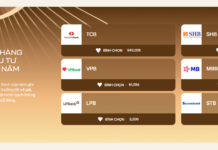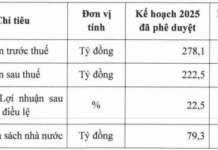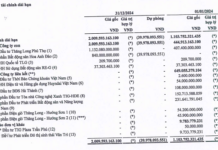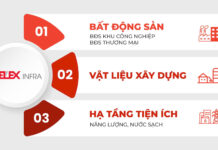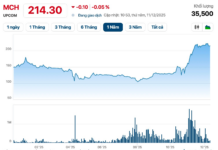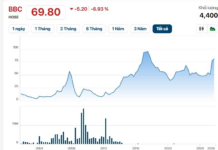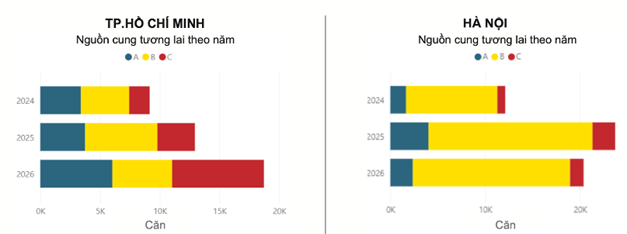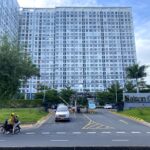The people of Ho Chi Minh City have been eagerly awaiting the decision on the land price table. The Ho Chi Minh City Department of Natural Resources and Environment has proposed four options for consideration. The first option is to maintain the status quo and make no adjustments to the land price table. The second option is to adjust the land prices according to Decision 02 – multiplying the land prices in this table by a land price adjustment coefficient (K) as per Decision 56. The third option is to adjust the land prices of roads planned for resettlement to reflect the actual land prices, with the land prices of roads according to Decision 02 multiplied by the coefficient K. The fourth option is to adjust the land price table to align with the local reality.
Among these options, the Department of Natural Resources and Environment recognized that options 1, 2, and 3 have limitations and are not suitable for the local context. Hence, they selected option 4 and sought broad feedback.
If approved, this land price table will be effective until December 31, 2025. However, the city will conduct an evaluation at the end of this year to ensure it remains relevant to the current situation. Starting in 2026, Ho Chi Minh City will apply a new annual land price table in accordance with the 2024 Land Law.
According to the proposal by the Department of Natural Resources and Environment, land prices in many areas are expected to increase by an average of 5-10 times compared to the current rates, with some outlying and peripheral areas projected to see adjustments of 15-50 times the current rates (excluding the K coefficient, which is 3.5). The department believes that if the K coefficient is taken into account, the land prices will be approximately 2.5 times higher than those specified in Decision 02 of the City and will reach 70% of the market price. This could inadvertently create a significant financial burden for citizens and businesses.
Prioritizing the Interests of the People
In a discussion with the author, Ms. Tran Nguyen Hoang Uyen, Director of the Nha Tot platform, expressed her opinion that adjusting the land price table to align with market principles is reasonable and necessary due to the shortcomings of the previous table. However, she noted that the proposed table reflects a significant increase compared to the old one and is intended to be implemented within a short period, which could result in substantial financial pressure for affected individuals and entities, especially the citizens.
“People whose land is revoked will receive higher compensation. However, when it comes to changing the land use purpose, citizens will have to bear higher financial obligations than before,” said Ms. Uyen.
According to Nha Tot, the adjustment of land prices in Ho Chi Minh City has multiple advantages. For instance, the state will benefit from increased budget revenues, and key projects and works invested in by the state budget are more likely to stay on schedule without bottlenecks, partly resolving the equation for the real estate supply source. Additionally, adjusting land prices will help curb administrative violations related to land.
“The adjustment of the land price table will increase state budget revenues from related activities, thereby facilitating the realization of the target of allocating 6% of GDP to infrastructure. Upgrading the road, bridge, airport, seaport, and railway systems will enhance the competitiveness of industrial parks and reduce competitive pressure related to price when attracting FDI capital,” Ms. Uyen asserted.
For businesses, the new land price table, which is closer to the market price, will lead to increases in land-related budgets such as site clearance costs, land revocation compensation, and land-related taxes and fees. Enterprises that own clean land and have already paid land use fees will have an advantage due to their lower input costs, making it easier to compete.
“Essentially, businesses will have to balance investment plans and selling prices to ensure profitability from their projects,” added the Director of Nha Tot.
Therefore, the development and application of the land price table must be carefully considered to balance the interests of all parties involved, with a particular focus on prioritizing the interests of the people. At present, postponing the implementation of the land price table as proposed by Ho Chi Minh City (expected to take effect from August 1, 2024) to allow for further consideration is a reasonable decision.
Which Option is the Most Suitable?
Among the four options presented by the Ho Chi Minh City Department of Natural Resources and Environment, the expert from Nha Tot believes that option 4 aims to align the land price table with market principles, addressing shortcomings in the old table, such as the discrepancy between the declared price on notarized contracts and the actual transaction price. It also aims to prevent budget losses for the state due to annual land lease payments based on a land price table that is lower than the market price, which prolongs the land recovery and clearance phase in projects due to compensation based on a land price table that is not reflective of market prices.
Given the benefits of the new table and the current data, Ho Chi Minh City’s desire to amend the land price table as soon as possible is understandable. However, this option faces challenges in balancing the interests of all parties involved in terms of land compensation and taxes related to land use and change of land use purpose.
According to Nha Tot, one of the most significant impacts of the 2024 Land Law on the real estate market is the government’s decision to abolish the land price framework and empower localities to determine annual land prices based on market prices instead of the previous five-year cycle. Additionally, the law stipulates that land can only be revoked after the delivery of resettlement housing. This regulation will facilitate the compensation and site clearance process, enabling faster implementation of projects.
However, as compensation prices approach market prices and stricter compensation support measures are implemented, input costs for projects will increase, leading to continued increases in housing and apartment prices in the short term due to limited new supply in the market.
In the next two years, the increase in the supply of apartments, especially in the C segment, is expected to help curb the rising trend of apartment prices in Ho Chi Minh City.
|
Apartment supply by segment forecast for 2024-2026
Source: Nha Tot
|
According to Ms. Uyen, adjusting the land price table to align with market principles is crucial and beneficial for various stakeholders. However, it is essential to consider a gradual increase in prices over time to avoid negatively impacting groups that need to fulfill higher financial obligations.
The Apex: An Elite Address in the Pulse of Ho Chi Minh City
Offering an unparalleled blend of luxury and convenience, The Landmark boasts an exclusive collection of serviced apartments and office spaces in the vibrant heart of Ho Chi Minh City. With a dedicated health club and a strong commitment to community development and sustainability, it stands as a prestigious landmark, redefining modern living and working in this bustling metropolis.
Insurer, Please Provide Interim Payments and Compensation for Storm Damage
The Insurance Regulatory Authority requests that insurance companies take a proactive approach by coordinating with relevant agencies, organizations, and individuals to identify human and property losses. They should also promptly provide interim payments, compensation, and insurance payouts to those affected.
The New Face of Transportation: Ho Chi Minh City’s QL13 Expansion Benefits Thuân An
“QL13 is a vital trade route that is currently undergoing aggressive expansion by Ho Chi Minh City. The city aims to improve its infrastructure and strengthen its connection to the industrial hub of Binh Duong. This expansion will facilitate smoother trade and solidify the city’s position as a key gateway to the region’s thriving industry.”
The City of Ho Chi Minh: Delayed Pink Book Distribution at Residential Projects
The Ho Chi Minh City Department of Natural Resources and Environment has stated that there are delays in issuing pink books to transferees at housing development projects due to various reasons and obstacles. This has led to a backlog and subsequent wait times for recipients.










